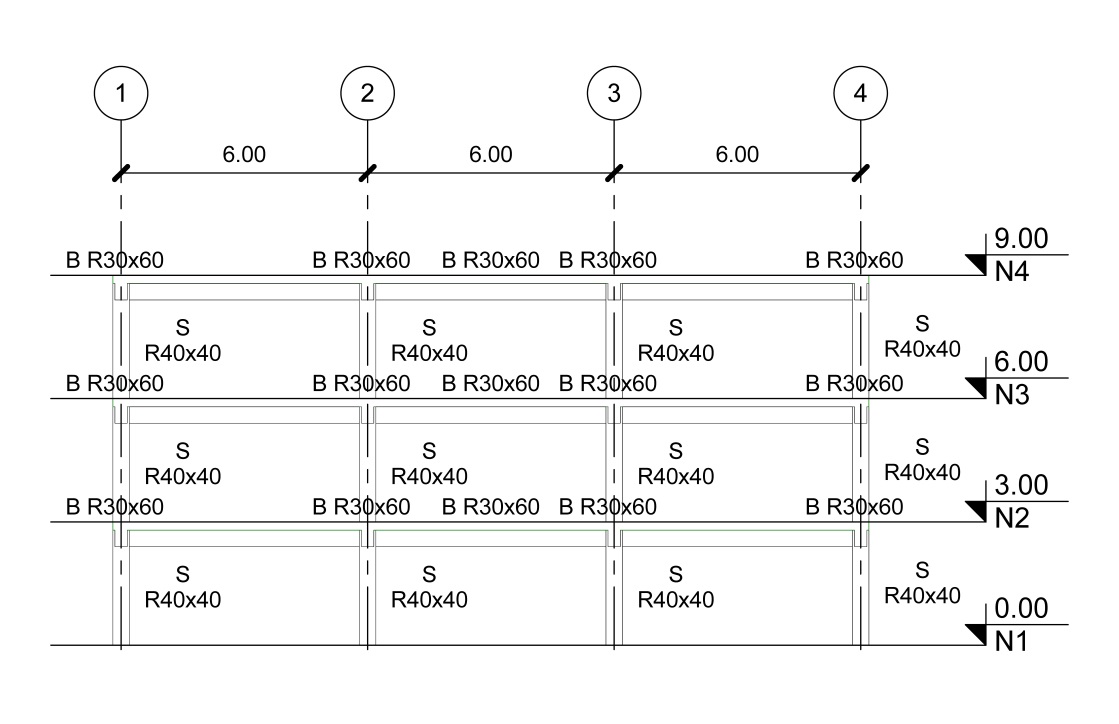Alternative procedure to determine the response reduction factor for ductile rc framed buildings
DOI:
https://doi.org/10.13140/RG.2.2.24840.11529Keywords:
design spectrum, response reduction factor, non-linear analysisAbstract
The seismic design is based on the results of the structures elastic analysis, even though now days the nonlinear analysis is increasingly accessible. To perform the seismic analysis of structures that are modeled with elastic behavior, but known to venture into the plastic behavior, the standards establish the reduction of the elastic design spectra by the use of reduction factors, formulated essentially on the basis of the engineering judgment. This paper proposes a strategy to obtain response reduction factors, based on the results of non-linear analysis of soil response and structural systems with a degree of freedom, along with the non-linear response of multiple grade of freedom framed structural systems by armed concrete, for the specific spectra of Venezuela. The results of response reductions factors were greater than the current values of response reduction prescribed by the Venezuelan seismic code, which can favorably lead to a displacement-based design instead strength-based design.
Downloads
References
A. S. Veletsos y N. M. Newmark, “Effect of inelastic behavior on the response of simple systems to earthquake motions,” de 2nd World Conference on Earthquake Engineering, Tokyo, Japón, 1960
J. C. Vielma, A. H. Barbat y S. Oller, “Factores de reducción de respuesta: estado del arte y estudio comparativo entre códigos,” Revista internacional de ingeniería de estructuras, vol. 11, nº 1, pp. 79-106, 2006
ATC, “Structural response modification factors” Applied Technology Center, Redwood City, 1995
INSTITUTO NACIONAL DE NORMALIZACION, “Diseño sísmico de edificios”, 3ª. Edición, Santiago de Chile, 2012
W. Lobo, P. Rivero y J. C. Vielma, “Hysteretic determination of the response factors Rµ according to structural types,” Vancouver, 2004
J. C. Vielma, W. Lobo y P. Rivero, “Factores de reducción de respuesta por ductilidad de estructuras con comportamiento no lineal” Revista Ingeniería UC, vol. 12, nº 2, pp. 1-25, 2005
J. C. Vielma, W. Lobo y P. Rivero, “Factores de reducción de respuesta por ductilidad de estructuras con comportamiento histerético” Revista Sul-Americana de Engenharia Estrutural., vol. 3, nº 2, pp. 45-65, 2007
J. C. Vielma, “Caracterización de la respuesta sísmica de edificios de hormigón armado mediante la respuesta no lineal”, 1ª. ed., Barcelona: Universitat Politecnica de Catalunya, 2008
FONDONORMA, “Norma Venezolana COVENIN 1756:2001. Edificaciones sismorresistentes” Fondonorma, Caracas, 2001
J. C. Vielma, A. H. Barbat y S. Oller, “Proyecto sismo-resistente de estructuras porticadas”, 1ª. ed., Barcelona: Centro Internacional de Métodos Numéricos en Ingeniería CIMNE, 2011
J. C. Vielma, A. H. Barbat y S. Oller, “Proyecto sismorresistente de estructuras porticadas”, 1ª. ed., Barcelona: CIMNE, 2010
J. C. Vielma, A. H. Barbat y S. Oller, “Dimensionado sísmico de edificios de hormigón armado mediante factores de amplificación de desplazamientos con base en el balance de energía” Hormigón y Acero, vol. 63, nº 263, pp. 83-96, 2011
Fondonorma, “Norma Venezolana 1753:2001. Proyecto y construcción de obras en concreto estructural”, Fondonorma, Caracas, 2006

Published
How to Cite
Issue
Section
The opinions expressed by the authors do not necessarily reflect the position of the editor of the publication or UCLA. The total or partial reproduction of the texts published here is authorized, provided that the complete source and electronic address of this journal is cited. Authors have the right to use their articles for any purpose as long as it is done nonprofit. The authors can post on the internet or any other media the final approved version of their work.






.png)




